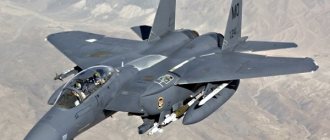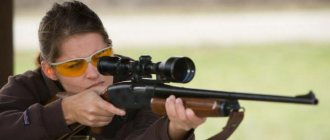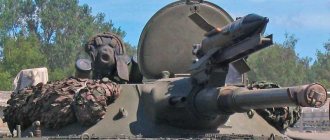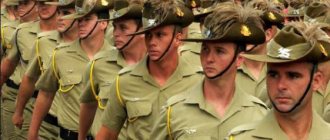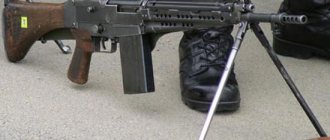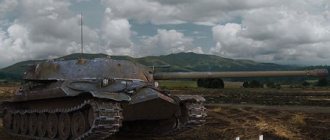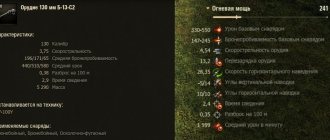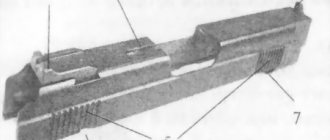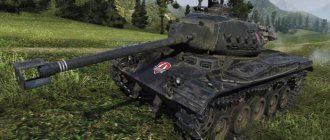Quite often in our time, in combination with various emergency situations that arise due to certain coincidences of circumstances, tragedies are observed that are provoked by the deliberate acts of people. Such influences, in any case, which are associated with violence, are called terrorism.
Modern youth planning to enroll in fixed-term or contract service in the armed forces often ask the question: “ Anti-terrorism in the army - what is it?” "
Important! Terrorism is an act of violence or the threat of its use against people, certain organizations, as well as damage and destruction or an accompanying threat to property with the risk of death, causing significant damage to property.
Such actions are carried out to violate the public security regime, to put pressure on various government bodies, to make decisions that are obviously beneficial to third parties.
The concept also includes an attack on the health and life of civil servants, politicians, representatives of foreign states, and international institutions.
Anti-terrorist security in the Russian Federation
Terrorism has become quite a common phenomenon on the planet in recent decades. The tension of the situation is predetermined by the increase in the already many illegal groups, which are aggravating the situation mainly in the territory of the Middle Eastern states. The targets of terrorist attacks can be a wide variety of places: airplanes and airports, city limits, children's institutions, organizations, in general, any public places with large crowds of people.
Such a danger requires more effective measures to prevent further tragedies. Preparing anti-terrorism protection at particularly important facilities and strengthening security in sensitive organizations may not always be sufficient measures. Among other things, special attention is paid to the training of direct personnel of these and other organizations.
National Gendarmerie Intervention Unit
The group was created in 1974 to combat Arab terrorism in France. From the very beginning it included only 15 volunteer gendarmes. But in our time the number of the group has grown to 200 people. Throughout its time, the group was able to save about 500 people and conduct more than 100 anti-terrorist operations. About 10 soldiers died. But we would call the most successful operation the rescue of 18 people held hostage on an airplane in Marseille. Terrorists captured it in 1994.
Anti-terrorism security of the Russian Federation
Schools, hospitals, businesses and any other organizations must have approved documents that define the procedures for people to act in the event of emerging threats. These are the so-called anti-terrorist instructions and passports. Their main provisions must be brought to the attention of all personnel. In addition, to ensure greater public awareness, visual propaganda should also be posted. All these activities should be carried out by management, and independently.
Federal legislation stipulates that individual entrepreneurs and legal entities are required to ensure conditions for preventing threats to the lives of citizens. However, the regulatory documents do not explain in detail how anti-terrorism protection can be guaranteed in the Russian Federation. As a result, the list of activities is developed by responsible persons independently. In practice, this looks like approval of a local document, a passport, in which the appropriate measures should be prescribed.
What is written in the general provisions
This is usually where the general purpose of the document is described. This section also lists some measures that must be taken by personnel. The following requirements may be imposed on primary anti-terrorist security measures:
- Entrances to buildings must be carried out in accordance with passes or documents that confirm identity;
- When there is a need to receive specific citizens, officials notify the security personnel at least half an hour before the start of the visit.
Cobra
The Australian state decided to create its own anti-terrorism unit immediately after member ministers were attacked by terrorists in 1973. The Austrian authorities officially announced the creation of Cobra in 1978. The unit reports to the Australian Department of Home Affairs' Director General of Public Safety. Cobra is also responsible for security at Vienna's Schwekat Airport. The militants have French 9mm pistols. Experts believe that this weapon is best suited for anti-terrorist actions.
What are the requirements for personnel procedures?
This describes the rules that employees must follow in the event of a threat to their lives. For example, the sequence of all actions in the event of detection of suspicious objects, which may be packages, boxes, bags and other things, is fully outlined, as well as the urgent evacuation and other measures necessary in such cases. It is mandatory to have various appendices to the instructions in the form of diagrams indicating emergency exits, telephone numbers of emergency and special services, etc.
Special Air Service
The 22nd Special Airborne Service Regiment is considered the UK's main anti-terrorist special forces unit. The regiment was created during the Second World War. The most successful operations include actions against the IRA in Ireland, Germany and Holland. The regiment also took part in thousands of operations from the Sahara to Malaysia. The most popular one is the release of hostages at the Iranian embassy in London in 1980.
How are the briefings conducted?
They are carried out in several stages. Anti-terrorist security of facilities requires mandatory training of personnel in the procedure for action in conditions of danger. During its implementation, personnel become familiar with the direction of the enterprise's policy in the field of anti-terrorism security. All managers can define their own training systems. There are mainly four main stages that are related:
- With the appointment of a responsible employee;
- With the development of a training plan;
- With instructions;
- With the results reflected in journals.
But these stages can also be accompanied by a wide variety of procedural actions, which should contribute to an even distribution of loads among the company’s departments.
How a training plan is developed
First of all, the responsible persons of the company develop a program that should include organizational issues with all the necessary measures. Following this, methods are selected to familiarize staff with the information. This can be oral explanations, demonstration of photo or video materials. The program contains sections in which the following should be reported:
- About general enterprise data that is significant as threats. For example, a company plan must be prepared, which should indicate the most vulnerable places where measures must be taken to strengthen anti-terrorist security;
- About threat factors. Prerequisites, for example, may include the entry of unauthorized persons into the territory of the enterprise;
- About lists with normative and local documentation, with the help of which anti-terrorist security measures can be regulated. All personnel of the enterprise are required to familiarize themselves with their provisions;
- About the sources from which employees can receive information about threats, about measures taken to prevent them at the enterprise. In particular, all the necessary information can be found using a special stand called the “Anti-Terrorism Security” type, on the company’s website, etc.;
- About the actions to be taken to prevent threats. For example, these could be actions such as pressing an alarm button, blocking doors in rooms or in the entire building, etc.;
- About practical recommendations. This indicates the measures to be taken in certain situations. In particular, inform law enforcement officers about the actions of suspicious subjects, how not to succumb to panic, etc.
"Chicks" take wing
For the first time, young pilots of the fighter air unit of the Eastern Military District completed combat training missions to intercept and destroy air targets. Recent graduates of military universities worked out the standards for putting on flight uniforms, made paired takeoffs from an airfield in the Trans-Baikal Territory and carried out electronic launches of guided missiles at “enemy” aircraft. The crews of Su-30SM multi-role fighters carried out elements of air combat with mock enemy aircraft, whose role was performed by experienced pilots on the same fighters. In addition, when intercepting air targets, the “youth” crews practiced elements of simple and complex piloting - both alone and in pairs.
© mil.ru
For the first time, young Air Force pilots completed missions to intercept and destroy air targets.
On the same days, young army aviation pilots from the Western Military District (WMD) practiced landing on an unprepared surface. The training flights took place in St. Petersburg, at the airfield of a separate helicopter regiment of the Leningrad Air Force and Air Defense of the Western Military District. During the training, the crews of the Mi-8 multi-purpose transport helicopters, the Mi-28 “Night Hunter” reconnaissance and attack helicopters and the Mi-35, under the guidance of experienced instructor pilots, first performed a set of basic piloting elements. The young pilots practiced taxiing along the runway, taking off, and flying in a circle over the airfield.
The next element of the training was the landing of rotary-wing aircraft on unprepared areas of the terrain. In combat conditions, the need to land a “turntable” not in equipped places, but “where it is needed” often arises. First of all, for the landing of landing personnel, the evacuation of the wounded, and the delivery of ammunition and cargo. Therefore, every helicopter pilot must know the algorithm of actions and have practical skills in performing this task. In such cases, landing on a site selected from the air is carried out after its careful inspection by the helicopter commander. After assessing the terrain parameters, the pilot also needs to take into account the flight weight of his aircraft, as well as the outside temperature, wind speed and altitude of the site above sea level.
© mil.ru
At the airfield of a separate helicopter regiment of the Leningrad Army Air Force and Air Defense of the Western Military District, training flights were held with the participation of young pilots.
Not only young pilots, but also “young” rockets are now being tested by practice. Army aviation pilots of the Southern Military District (SMD) conducted the first launches of the modernized Vikhr-1 anti-tank guided missile. For the first time, this “smart” aviation ammunition was presented by the Kalashnikov concern at the International Military-Technical Forum “Army-2020”. The rocket’s journey from the weapons company’s demonstration center to the aviation test site in the Krasnodar Territory took only a few months.
The experience of military operations in recent years shows that such ammunition is necessary for victory in modern combat. The missile is capable of hitting both ground and air targets protected by active armor.
© mil.ru
The Vikhr-1 missiles were launched in Kuban from Ka-52 Alligator attack helicopters from an altitude of about 300 meters.
Guidance is carried out using an automatic sighting system. The automatic tracking function allows the pilot to perform a minimum of actions, which significantly reduces the time until the target is destroyed. When an enemy armored vehicle enters the scanning zone, the target is automatically tracked, and the pilot can only act according to the principle: “detected - pressed the button - forgot.”
The Vikhr-1 missiles were launched in Kuban from Ka-52 Alligator attack helicopters from an altitude of about 300 meters. Aviation ammunition has shown high efficiency. Army aviation pilots from the Southern Military District successfully hit “tanks” at a range of about eight kilometers.
Direct speech
“Today there is an active re-equipment of aviation units and formations with the latest aviation equipment, which is more difficult to operate. Therefore, increased demands are now placed on the professional level of flight and engineering personnel. At the same time, we are paying attention to strengthening control over the organization of flight work.”
Minister of Defense of the Russian Federation, Army General Sergei Shoigu. From a report at a conference call with the leadership of the Armed Forces. Moscow, November 3, 2022.
© mil.ru
Minister of Defense of the Russian Federation, Army General Sergei Shoigu, at a conference call on November 3, 2022.
Emergency procedures
When emergency circumstances occur, for example, the threat of a terrorist attack, all employees are required to be prepared for this and know the rules of action during an emergency situation. For these purposes, the program should additionally include rules for employee personnel actions, with:
- Providing an evacuation plan;
- Designating places where personnel can take shelter;
- Informing employees about the rules for communicating with law enforcement about threats.
Thus, all employees must have a clear anti-terrorism plan, which should describe all actions to prevent terrorist attacks, as well as in the event of other dangers.
Features of anti-terrorism measures
All activities that require special training should be approached systematically. For example, this could be training in alarm actions due to the detection of suspicious objects. Plans can be drawn up in the form of tables indicating in them:
- Serial numbers;
- Names of events;
- Responsible persons;
- Time of the event.
If necessary, preparatory activities can be divided into phases and carried out with employees at different times. Plans are agreed upon at committee meetings with managers. Information about training must be communicated to all employees or workers. Typically, this is done through public notification (announcements, mailing letters, etc.).
Individual and group events
Briefings can be carried out in a variety of ways. Most training is carried out in groups of personnel. You can also study the rules individually with beginners. It is worth noting that all events are permissible only during working hours. It is prohibited by law to detain staff or work with them on weekends.
But when it is not possible to conduct training during working hours, overtime work must be formalized in accordance with the regulatory framework, and the same applies to payment. Training is also prohibited during lunch breaks. Enterprise managers should also allocate special premises in which everything about the anti-terrorism security of the Russian Federation will be explained to the staff, along with the rules of conduct in case of threats.
Delta
The US Army task force has existed since 1976. Moreover, initially they wanted to create anti-terrorist groups in the United States on the basis of the Green Berets. Only now the high command decided to create new forces. At one time, the delta was the favorite of American President Reagan. The unit is responsible for the release of American hostages abroad.
How are the results presented?
The results of the briefings should be recorded in special journals. They are led by persons who are authorized by the decision of the leaders to conduct training. There are no legal requirements for keeping logs. Thus, their forms are approved by local documents of enterprise managers. However, regulatory authorities may check the contents of the logs. Based on the results of audits, claims may be made that need to be addressed. Logs must be kept by authorized persons. They must be signed, numbered, laced and sealed. Logs are filled out as needed.
What does the Anti-Terrorism Commission do?
The Anti-Terrorism Commission is a body that carries out coordination activities in the territories of the constituent entities of the Russian Federation. and also works with territorial executive bodies, including local authorities, on issues of preventing terrorism, minimizing and eliminating the possible consequences of its expression. The commissions are engaged in the implementation of state policy on countering terrorism throughout the Russian territory, studying political, socio-economic and other processes in the regions that affect the situation in the field of countering terrorist activities, developing measures to prevent terrorism, and also perform many other tasks. The chairmen of the commissions are, as a rule, regional governors. The regulations on Anti-Terrorism Commissions can be found on the official websites.
WWE
Selected anti-terrorist units of the Royal Corps from the Dutch Navy. This special group gained fame in 1977. At the same time, the fighters confronted the terrorists who seized a train in the south of the country. This incident is considered one of the most key in the history of the counter-terrorism squad. But in peacetime, the BVE is considered a typical structural unit of the country's army.
Brief conclusions on anti-terrorism
Guarantees of safety at any enterprise are one of the fundamental tasks of managers. Some directors do not quite understand the significance of these processes. Such managers refer to the impossibility of stopping production processes and do not comply with the requirements of the law on mandatory personnel training. But, as we know, no one is safe from terrorist threats.
As a rule, panic sets in, which can lead to the most serious consequences, so law enforcement agencies systematically provide reminders that it is necessary to conduct anti-terror training. It is not enough that only documentaries on this topic be shown. Safety briefings are not a whim of the legislator. The need for them is dictated by the realities of our days.
